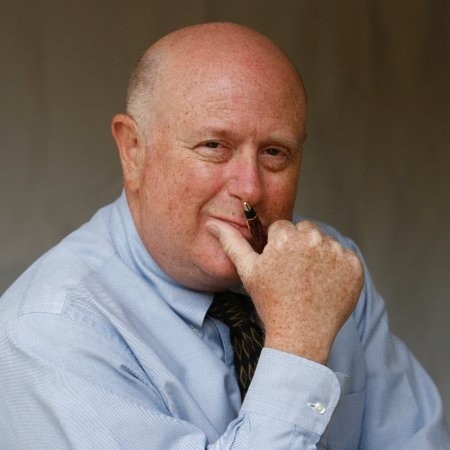
California again faces potential blackouts. This time it is tied to a natural gas storage facility called Aliso Canyon owned by Sempra Energy’s Southern California Gas. The site's ability to deliver energy was crippled by a natural gas leak described as an ecological disaster comparable to the BP oil rig explosion. State officials worry that this key facility will not be able to deliver sufficient supplies to California’s natural gas generating plants during summer peak electricity demands.
Imagine islands of light fueled by solar connected to batteries
Here’s how solar and distributed generation could become national news this summer. It is 7 p.m., and Los Angeles is blacked out. It's the third day of a blistering heat wave made more intense by global warming. People cut back on their air conditioning in the first two days in response to public service announcements to “save the grid.” But on that third evening, it was still over a 100 degrees from the valley to the beaches. Everyone decided they had to get cooler. Collectively they only moved their thermostats back down just a couple of degrees. But that was enough. The increased draw of electricity overwhelmed the grid. It automatically shut down because it just could not produce and deliver any more electricity.
But across LA, there are customers with power. They have lights. Even more importantly, they have air conditioning. Customers flock to these businesses. Neighbors walk over to ask their solar-powered neighbor about how they still have electricity.
The press see a media opportunity. Camera crews show up in front of the homes and businesses that have electricity because of solar systems connected to batteries. They ask questions about cost and find that these customers are actually saving money too. Then the reporters turn to the camera and ask, “Could this be the next iPhone-like technology breakthrough that California creates for all of us?”
California’s push to make solar and batteries the lower-cost, more reliable solution
California leads the nation in solar installations. The state has almost 500,000 solar systems representing approximately 4,000 megawatts.
California is also pioneering how battery systems can displace fossil fuel generation. California passed legislation in 2010 that mandates grid-scale electricity storage. In 2013, the California Public Utility Commission (CPUC) set a target for the state’s utilities to develop over a gigawatt of energy storage by 2020. In 2014, the CPUC overruled utility efforts at blunting or stopping customers from connecting their onsite solar system to battery systems. California also started a behind-the-meter battery incentive program. The combined result is that California has over 11 megawatts of behind-the-meter batteries representing 80 percent of the nation’s behind-the-meter battery capacity.
This solar-plus-battery push by California is being driven by three factors:
- Global warming public policy. The state’s leadership believes global warming is real and a threat to human and economic health. They are pursuing public policy that targets a 40 percent reduction in global warming emissions below 1990 levels by 2030.
- A focus on lowering customer electricity bills. California’s price of grid electricity is one the highest in the U.S. Counterintuitively, California’s focus is not on the price per kilowatt-hour, but on the size of electricity bills. This focus explains the state’s emphasis on energy-efficiency technologies and Zero Net Energy building codes. This focus explains California’s commitment to customer-owned solar. Now the state is pursuing battery technology as the next technological step for enabling cleaner, lower-cost and more reliable electricity.
- Economic growth. California is outpacing all other states in economic growth. Since the Great Recession, it has added more jobs than the entire population of Nevada or Nebraska or the combined populations of Delaware, South Dakota and Alaska. It is achieving this scale of economic development success while also reducing the state’s global warming emissions. From smart thermostats to solar to batteries, California is focused on selling its technology solutions to the world as part of the state's economic development strategy.
A global solution to blackouts
Solving blackouts is a fourth reason for California’s commercialization pursuit of solar-plus-battery technologies. Blackouts are rare. But they do happen. Local blackouts occur when a car hits a power pole. They happen when severe weather damages lines. More rarely, outages can occur at the generation and transmission levels. Generation can go offline when coal piles freeze or natural gas is curtailed. Transmissions lines can fail if placed under too much load and heat.
In today’s digital world, a blackout has a significant and often high cost. California is creating the commercial path for avoiding this cost. It may be on display this summer if state warnings of a potential blackout are realized. If this happens, then this blackout could launch another California clean-tech innovation into national awareness. It might be the event that accelerates the day when most homes and businesses in the U.S. have a solar-plus-battery power system.
Part two of this article will explore how California is pioneering the smart, lower-cost, cleaner and more reliable technology alternative to a monopoly electricity system.
Image credit: Flickr/Joe Wolf

Bill Roth is a cleantech business pioneer having led teams that developed the first hydrogen fueled Prius and a utility scale, non-thermal solar power plant. Using his CEO and senior officer experiences, Roth has coached hundreds of CEOs and business owners on how to develop and implement projects that win customers and cut costs while reducing environmental impacts. As a professional economist, Roth has written numerous books including his best selling The Secret Green Sauce (available on Amazon) that profiles proven sustainable best practices in pricing, marketing and operations. His most recent book, The Boomer Generation Diet (available on Amazon) profiles his humorous personal story on how he used sustainable best practices to lose 40 pounds and still enjoy Happy Hour!














